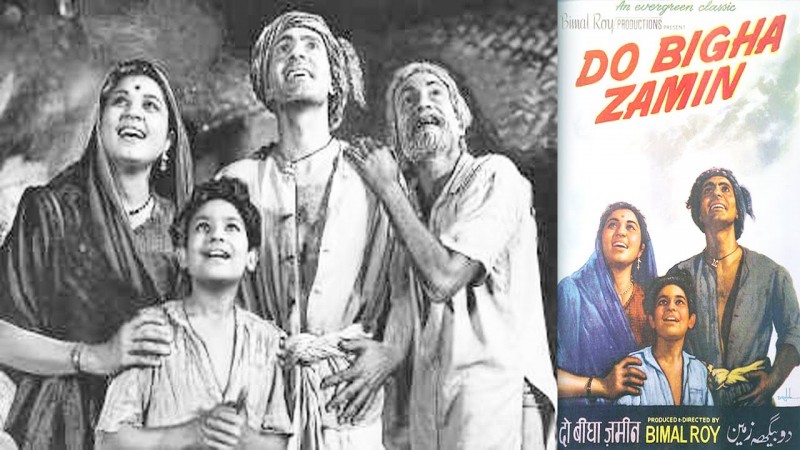
The Indian cinematic classic "Do Bigha Zameen," directed by Bimal Roy, is a timeless work of art that will live on in the memories of movie fans forever. The 1953 movie, Shambu Mahato, stars Balraj Sahni as a struggling farmer who must sell his family's farm to pay off debts. The story is poignantly told via Shambu Mahato's tribulations. The film's genius resides not just in its gripping story, but also in its creative choice to have two distinct endings, which has sparked discussions and disagreements among movie buffs for decades.
The original "Do Bigha Zameen" finale portrays a grim reality that is representative of the struggles that millions of farmers in rural India go through. In the bustling city of Calcutta (now Kolkata), Shambu pulls rickshaws out of a strong desire to reclaim his property. In a terrible twist, he succeeds in earning the needed funds but unfortunately loses them in an accident. The movie concludes on a depressing note, showing how the lives of the underprivileged people are consumed by an unrelenting circle of struggle and the crushing weight of poverty.
Unexpectedly, "Do Bigha Zameen" had a different ending when it was first aired for overseas viewers. The movie comes to a more upbeat conclusion in the alternate finale. After tragically losing the money, Shambu unexpectedly receives assistance from a generous rickshaw driver, who gives him the cash to repurchase his farm. In this version, Shambu finds his family on the land and is reunited with them, representing a ray of hope and fortitude in the face of difficulty.
The choice to have two distinct endings was made in response to the creative conundrum that Bimal Roy and the movie's creators encountered. While Indian viewers were highly moved by the original ending, it was deemed to be too bleak and emotionally taxing for viewers outside of India. The alternate ending was developed to instill a sense of hope and optimism in the viewer in an effort to make the movie more accessible to a global audience.
Over the years, discussions among movie fans have been spurred by the contrast between "Do Bigha Zameen"'s two possible endings. While some admire the original ending's severe reality, others contend that it offers a much-needed sense of hope among the despair of hardship and poverty.
Regardless of how it ends, "Do Bigha Zameen" is still regarded as a masterpiece of cinema because of its potent narrative, superb acting, and social importance. Due to its examination of socioeconomic inequalities and representation of the resiliency of the human spirit, the movie has become a timeless classic that crosses all barriers.
"Do Bigha Zameen" is proof of the ability of film to capture the complexity of human existence. The choice to have two distinct endings in the movie adds to its creative complexity and has provoked interesting discussions among historians and moviegoers alike. There is no disputing that "Do Bigha Zameen" continues to be a legendary and influential movie that continues to inspire and touch viewers throughout decades, whether one likes the stark realism of the original ending or the glimmer of optimism in the other version.
Anil Dhawan: The Journey of a Veteran of Bollywood